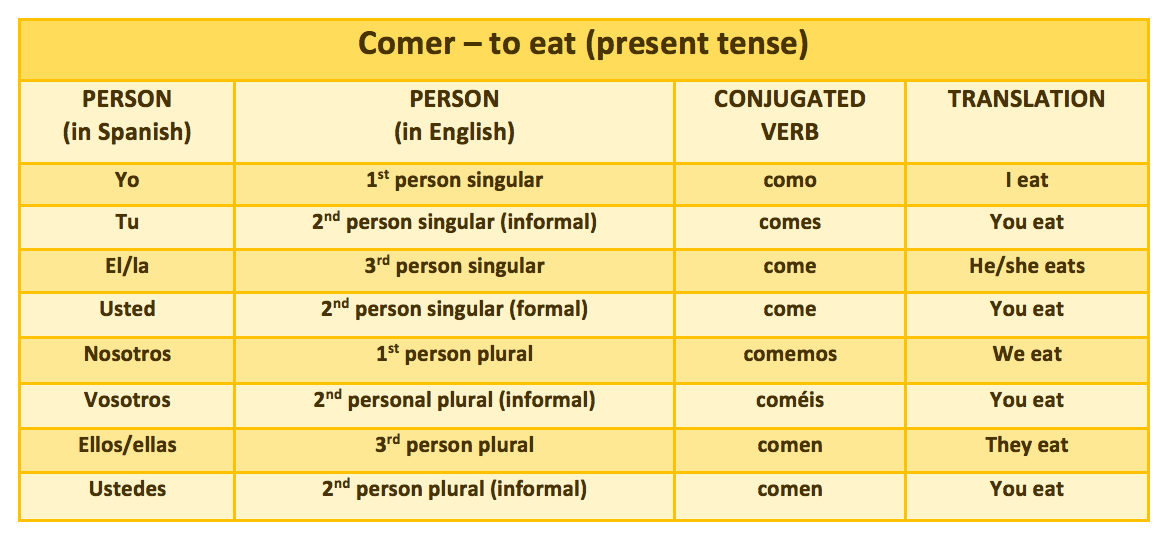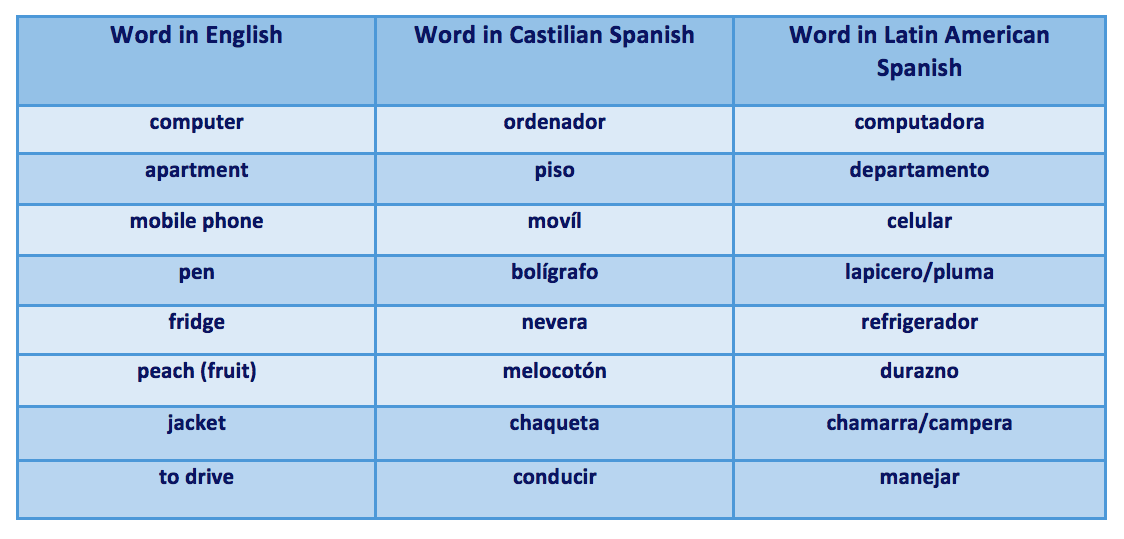The largest concentration of Spanish speakers can be found in South America however, the Spanish spoken in Latin America differs from Castilian Spanish (the variation of Spanish used in Spain). Although it does not prevent understanding of the language for a Spanish translator or native, it is useful to know the key differences between Spanish from Spain and Spanish from Latin America.
Perhaps the most significant difference is the use of vos, the 2nd person plural. In Castilian Spanish, verbs are conjugated as follows:

As demonstrated above, vos is used as 2nd person plural to refer to a group of people you are addressing directly. However, in some Latin American countries, vos has evolved over time and is now used as a more formal and polite version of tu, the 2nd person singular. This means it is used when addressing just 1 person directly. Consequently, some Latin Americans do not use vos as the 2nd person plural but instead the formal 3rd person plural.
An example of this would be with the following sentence:
Cuál fue la última pelicula que visteis? (what was the last film you saw?)
This uses the 2nd person plural, which is informal. This is used in Spain when conversing with close friends. If they were required to be more formal, when addressing elders for example, they would say:
Cuál fue la última pelicula que vieron? (what was the last film you saw?)
In Latin America however, you would use the latter sentence for addressing both peers and superiors.
As a general guideline though, it’s usually a good idea to address anybody you don’t know in the usted form. In Latina American Spanish, if you start with usted you may be invited to tutear with the speaker – to address them in tú form.
Another key point to remember is the differences in vocabulary. Certain words have a completely different meaning in Latin America than they would in Spain. For example, the verb coger. In Spain, this is used on a regular basis as it means ‘to take’. However, if you were to use this in Latin America, it would be offensive as it instead refers to making love.
It is also important to realise that even in South America, the language varies depending on the country. For example, the word taco means ‘swearword’ in Spain, ‘heeled shoes’ in Argentina, ‘traffic jam’ in Chile and a tortilla dish to the rest of the world! Similarly, the word coche means ‘car’ in Spain but pushchair in Mexico and Argentina.
There are words that are not the same but have the same meaning. Here are some you should remember:

Pronunciation can also vary between the regions. For example, in Spain, many people pronounce the c which comes before an ie as a th sound. Latin Americans do not produce this sound. Consequently, the word gracias would be pronounced grasyas in Latin America but “grathyas” in Spain.
Although there are many things to bear in mind when alternating between both versions of Spanish, bearing in mind this information will definitely ease the process, improving your ability to learn or translate Spanish. At Creative Word, we provide specialized services, such as interpreting, multilingual copywriting and translation, that are appropriate for audiences of all kinds. Please contact us for more information.

Recent Comments